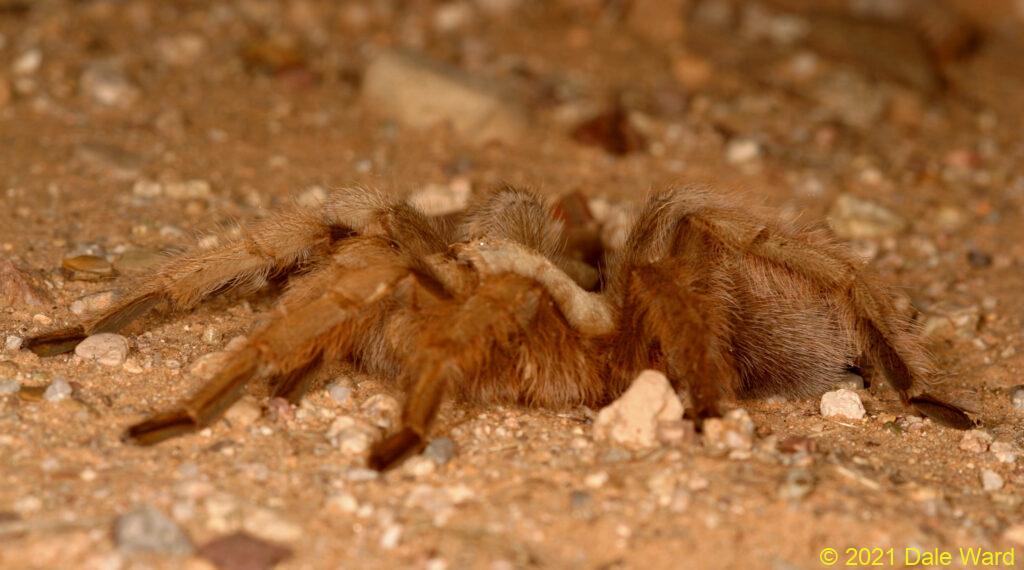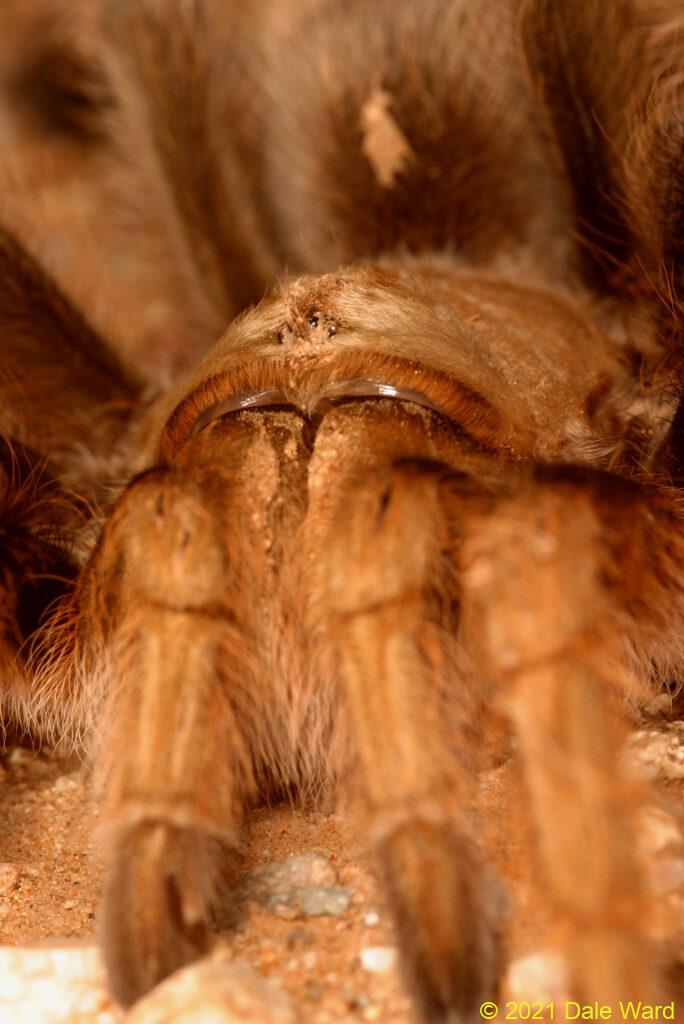A Sonoran Desert Tarantula - Aphonopelma chalcodes
A delightful encounter with a Tarantula in Southern Arizona
 _Aphonopelma chalcodes_, strolling through the desert night.
_Aphonopelma chalcodes_, strolling through the desert night.
This is a post describing a marvelous night I had way back in September of 2004. I was out hiking through the Sonoran Desert in South Tucson one night when I came across a large Tarantula that was slowly walking along the desert floor.
Wow. This was an impressive creature. Its legs spanned five or six inches, and it had a thick, heavy body. It looked like a female - the robust body, the lack of ‘mating hooks’, and no enlarged pedipalps.
She stopped walking as I approached her, but then she gave no other sign that she noticed me. No flicking of her gaster, no rearing, etc - she just stood quietly.
 _Aphonopelma chalcodes_. I was able to walk around her and take photographs with no problem - she seemed to ignore me.
_Aphonopelma chalcodes_. I was able to walk around her and take photographs with no problem - she seemed to ignore me.
I was able to move all around her, and even to lay down on the ground next to her to get low angle photographs.
 _Aphonopelma chalcodes_, side view.
_Aphonopelma chalcodes_, side view.
 _Aphonopelma chalcodes_, front view. This is my favorite photograph from our meeting.
_Aphonopelma chalcodes_, front view. This is my favorite photograph from our meeting.
She even let me get a close-up of her face. She still was showing no sign of distress, beyond sitting ther, rock-solid.
 _Aphonopelma chalcodes_, close-up of front view. I like her little cluster of eyes, just above the center of this photo. I also think the row of stiff hairs on the front edge of her carapace, just below her eyes, is really cool.
_Aphonopelma chalcodes_, close-up of front view. I like her little cluster of eyes, just above the center of this photo. I also think the row of stiff hairs on the front edge of her carapace, just below her eyes, is really cool.
I sat with her in the glow of my flashlight for about twenty minutes, then continued on my way.
Later, when I was at home, I wasn’t confident regarding my identification of this spider’s species. There were swarms of possible Tarantula species that she could have been, all of them differing by minute and hard-to-visualize characters.
In birding, the Empidonax genus of Flycatchers were famous for being very difficult to differentiate in the field. I had a birding friend who told me that the Latin translation of Empidonax was Latin for “Lump, don’t split.”
I thought this joke was enormously funny at the time. It was less funny as I was trying to ID this spider, and the quotation came back to me. Lump, don’t split! I eventually gave up pm getting a good ID on this girl.
Recently, however, I came across a paper by Drs. Hamilton, Hendrixson and Bond, a revision of the genus_Aphonopelma_. Their revision merged and synonomized a lot of the putative Aphonopelma species. I don’t remember exactly, but I vaguely recall that they synonomized about 30 species. Lump! Don’t split!
They’ve got great keys, great range maps, and helpful illustrations.So - I think this spider is Aphonopelma chalcodes - variously known as the “Arizona Blond Tarantula”, the “Mexican Tarantula” and the “Western Desert Tarantula”.
My favorite common name/description for this spider, though, has to be the one from a marvelous video made by a group of spider enthusiasts calling themselves the Tarantula Collective. The video is entitled “Spider Queen of the Sonoran Desert - Aphonopelma chalcodes”:
Although they may have meant the “Spider Queen of the Sonoran Desrt” epithet jokingly, it’s also a very fitting name. There was a calm regalness, a quiet magnificence, about this spider.
Funny to think. Female Tarantulas can live a long time - decades. Maybe she’s still alive out there, seventeen years later, roaming the desert floor.
Sources:
Hamilton CA, Hendrixson BE, Bond JE (2016) Taxonomic revision of the tarantula genus Aphonopelma Pocock, 1901 (Araneae, Mygalomorphae, Theraphosidae) within the United States. ZooKeys 560: 1-340. https://doi.org/10.3897/zookeys.560.6264.